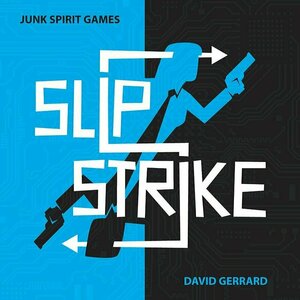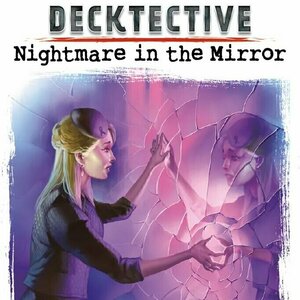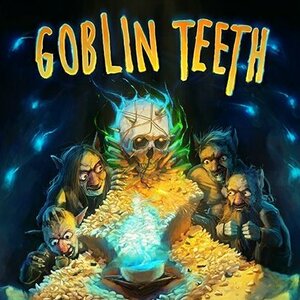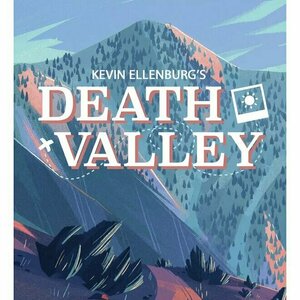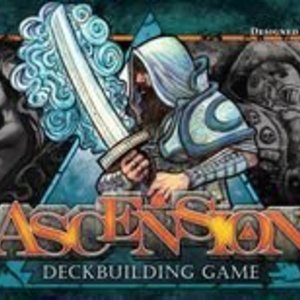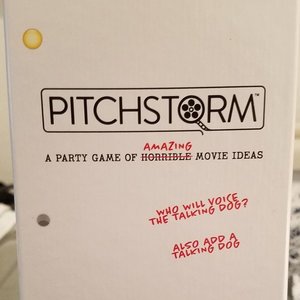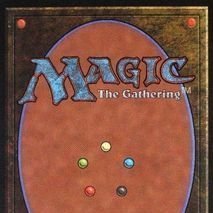Search
Search results
Purple Phoenix Games (2266 KP) rated Boba Boss in Tabletop Games
Nov 21, 2019 (Updated Nov 21, 2019)
If you are a fan of Purple Phoenix Games then you probably know of our love affair with Happy Salmon. It’s an excellent dexterity card game and it just works in so many different situations. So when I saw the promo video for Boba Boss (linked below) I thought that we might have a contender on our hands. Was I right?
Boba Boss is a quick-playing modular action/dexterity card game of filling your orders for demanding customers of your delicious boba tea. You appease them by filling their order cups with brew, but your opponents are also trying to fill their cups as quickly as possible. Are you able to complete your orders before your competitors?
DISCLAIMER: We were provided a prototype copy of this game for the purposes of this review. These are preview copy components, and I do not know if the final components will be similar or different, or if the Kickstarter campaign will alter or add anything through stretch goals. -T
To setup, you will need to decide which modules of the game you wish to incorporate. The game comes ready to play out of the box for an easier first game. I suggest you play this way to get familiar with how the game plays before you start adding in different modules. Or don’t. I’m not your mother.
Once the game is setup your objective is this: fill all your cups. You do this by frantically flipping cards from your deck hoping to get Straw cards. One straw will fill one cup. Two straws will fill two cups. Play needs to be brisk because the other players are flipping over cards as well and some of them will instruct the player to unflip (re-flip? Probably the same thing…) your readied tea card. This means that you must hope to flip over more straw cards to fill your cups.
There are three ways to play Boba Boss and they all have to do with the spill cards. These are cards that will have text on them in different colors. The three modes of play are identified by using three aspects of the spill cards: splatter color, text color, text text. So a spill card could have a red background (splatter color). If the round is played using splatter color and you flip over one with a red splatter color, you may unflip a readied red cup. The next round you may choose to play these cards with the text color. Each card will also have bubble text in different colors. So maybe that same red splatter card will have green text, so you would unflip a readied green tea card. And the final mode is text text. This means that same card may have the text in green but the word actually spells out “purple,” in which case you will unflip a purple player’s readied tea card. Play continues in this fashion until someone yells, “BOBA!” indicating they have two or less cups to fill. Once a player has filled all their cups they must yell, “BOBA BOSS!” And then they are crowned the victor.
This is just the base base game. Like I said, this game is modular in that you can add different dimensions of difficulty to it to have just a ridiculously confusing and frenzied play experience. One such module will add “optional flavors” to your game to increase the chaos and replayability. One example is shown below – “Karatea” (karate). When you draw and play Karatea you are to kick (flick) another player’s tea cup card where they will need to reset it to continue play. This just increases the time needed for the kicked player to win and just causes mayhem in the process. These extra flavor cards were provided to us but we just could not get all of them into play. The “Royaltea” and “Tea Rex” cards are favorites of ours.
Components. Again, we were provided with a prototype version of this game, so components may end up being very different from what we played with. This game is a box of a ton of cards. Thankfully the cards provided were glossy because they are handled A LOT. The glossy protection will help with survival of the game while being obsessively played. We appreciate that. The art is great on the cards, and the colors are fabulous. No issues with components from us, even in this prototype version.
As if we didn’t already have enough stress in our lives, along comes Boba Boss and makes us sweat in the first 60 seconds. This game is such an adrenaline rush as you are trying to fill customer orders for boba tea. Playing with three different game modes and tons of different cards to be added in modular fashion makes for an excellent balance of chaos and brain adaptation that you just don’t get anywhere else. Honestly, as you can see from our preview, we had so much fun playing that we didn’t have time to take photos of much of the game, but we hope in adding our photo along with a graphic and video from the publisher that you will forgive us. We are very excited to watch this Kickstarter campaign and hopefully our readers will give it a chance. It fills a unique niche and earns a place next to our beloved Happy Salmon. High praise for a great game.
Boba Boss is a quick-playing modular action/dexterity card game of filling your orders for demanding customers of your delicious boba tea. You appease them by filling their order cups with brew, but your opponents are also trying to fill their cups as quickly as possible. Are you able to complete your orders before your competitors?
DISCLAIMER: We were provided a prototype copy of this game for the purposes of this review. These are preview copy components, and I do not know if the final components will be similar or different, or if the Kickstarter campaign will alter or add anything through stretch goals. -T
To setup, you will need to decide which modules of the game you wish to incorporate. The game comes ready to play out of the box for an easier first game. I suggest you play this way to get familiar with how the game plays before you start adding in different modules. Or don’t. I’m not your mother.
Once the game is setup your objective is this: fill all your cups. You do this by frantically flipping cards from your deck hoping to get Straw cards. One straw will fill one cup. Two straws will fill two cups. Play needs to be brisk because the other players are flipping over cards as well and some of them will instruct the player to unflip (re-flip? Probably the same thing…) your readied tea card. This means that you must hope to flip over more straw cards to fill your cups.
There are three ways to play Boba Boss and they all have to do with the spill cards. These are cards that will have text on them in different colors. The three modes of play are identified by using three aspects of the spill cards: splatter color, text color, text text. So a spill card could have a red background (splatter color). If the round is played using splatter color and you flip over one with a red splatter color, you may unflip a readied red cup. The next round you may choose to play these cards with the text color. Each card will also have bubble text in different colors. So maybe that same red splatter card will have green text, so you would unflip a readied green tea card. And the final mode is text text. This means that same card may have the text in green but the word actually spells out “purple,” in which case you will unflip a purple player’s readied tea card. Play continues in this fashion until someone yells, “BOBA!” indicating they have two or less cups to fill. Once a player has filled all their cups they must yell, “BOBA BOSS!” And then they are crowned the victor.
This is just the base base game. Like I said, this game is modular in that you can add different dimensions of difficulty to it to have just a ridiculously confusing and frenzied play experience. One such module will add “optional flavors” to your game to increase the chaos and replayability. One example is shown below – “Karatea” (karate). When you draw and play Karatea you are to kick (flick) another player’s tea cup card where they will need to reset it to continue play. This just increases the time needed for the kicked player to win and just causes mayhem in the process. These extra flavor cards were provided to us but we just could not get all of them into play. The “Royaltea” and “Tea Rex” cards are favorites of ours.
Components. Again, we were provided with a prototype version of this game, so components may end up being very different from what we played with. This game is a box of a ton of cards. Thankfully the cards provided were glossy because they are handled A LOT. The glossy protection will help with survival of the game while being obsessively played. We appreciate that. The art is great on the cards, and the colors are fabulous. No issues with components from us, even in this prototype version.
As if we didn’t already have enough stress in our lives, along comes Boba Boss and makes us sweat in the first 60 seconds. This game is such an adrenaline rush as you are trying to fill customer orders for boba tea. Playing with three different game modes and tons of different cards to be added in modular fashion makes for an excellent balance of chaos and brain adaptation that you just don’t get anywhere else. Honestly, as you can see from our preview, we had so much fun playing that we didn’t have time to take photos of much of the game, but we hope in adding our photo along with a graphic and video from the publisher that you will forgive us. We are very excited to watch this Kickstarter campaign and hopefully our readers will give it a chance. It fills a unique niche and earns a place next to our beloved Happy Salmon. High praise for a great game.
Purple Phoenix Games (2266 KP) rated Slip Strike in Tabletop Games
Jan 28, 2020
Super spies. We have all dreamed of being one – don’t lie! What about teleporting super spies? What about time-traveling teleporting super spies?! As a huge Doctor Who fan, that is right up my alley. Well, minus the eventual assassination that comes with winning the game. Dat theme tho…
Slip Strike is a card game of bluffing, running, and managing your resources. The goal of the game is to get one hit on your opponent: the final strike. This could come from a bullet, a knife wound, or several other injuries that lead to your opponent’s demise. You each have ways of “slipping” out of trouble, but they are limited and certainly give your opponent the upper hand.
DISCLAIMER: We were provided a prototype copy of this game for the purposes of this review. These are preview copy components, and the final components will probably be different from these shown. Also, it is not my intention to detail every rule in the game, but to give our readers an idea of how the game plays. If you would like to read the rulebook, you may purchase the game through the publisher, back the game through the Kickstarter campaign, or through any retailers stocking it after fulfillment. -T
To setup, each player chooses a color (in this edition either blue or black) and receives the cards and spy-eeple (speeple?) of that color. Randomly place the location cards in a circle, or pentagon shape, to mark the map. Each player will select a location card at which they would like to begin the game, and reveal these simultaneously. Players will place their speeples on those locations and the game is setup and ready to play! For a more hardcore game, you may include one or two special Asset cards. We did that.
Slip Strike has no “turns” in the traditional sense. Instead, players will be choosing two cards to be played in succession. These cards are all from their hands and can include movement, teleportation, and weapon cards. Once the players have set their two cards in front of themselves, the cards in the first slot will be revealed simultaneously and resolved. Movement happens first, then any teleportations, then weapon effects.
If a player chose to play a movement card (left or right), simply move the speeple one space in that direction. Teleportation cards have the speeples moving directly to the location specified on the card. Weapon cards will have text on them referring to which spaces will be affected by the weapon – same space, one space away, or two spaces away usually. Should an enemy speeple reside in a space and is to be hit, the attacking player either wins with a successful strike or the defending player will need to “slip” to another location by playing (and therefore also discarding) a location card. This location card is now out of play and essentially is used as a countdown to their end, as players only have one card per location to use for a future slip.
Each card will also feature a cooldown number on it. This number reflects how many game rounds this card will need to sit on the table before it can be shuffled back into the player’s hand. I believe this to be the greatest aspect of this game: utilizing the cool downs effectively in order to exact the most damaging tactics for victory. Some more powerful cards will also show an asterisk in place of a cool down number. This means that the card must remain out of play for three or more rounds before entering the player’s hand (see photo below for the Flamethrower Asset).
The player that can guess their opponent’s next moves, play their corresponding cards, and whittle down the location slips the fastest will become the ultimate spy and someone I definitely do NOT want to play against.
Components. As previously mentioned, we were provided a prototype copy of Slip Strike, and the components may change during the Kickstarter campaign. That said, this game is a bunch of cards and two speeples. The cards look incredible and the art is spot-in with the theme. I quite enjoy the art style and it stays out of the way while playing, but is also interesting enough that you can spend lots of time inspecting it when playing against AP-prone opponents. The speeples are cool, and I am excited to see where they end up as a result of a successful Kickstarter campaign. All thumbs up from us on components!
The game play is super solid. We had no questions on how to play the game after reading the rules (which are super short – thank you!), and we were off to murder each other in seconds flat. What I really appreciate about this game is that anyone can be successful with it and really get into the theme. Do you want to play as Agent Smith from The Matrix? Go for it! Want to play as Hiro Nakamura from Heroes (when he could control his powers, that is)? Do it! Slip Strike is quick, super engaging, and gives me the feeling of high-stakes, adrenaline rushing, globetrotting secret agents that I have been looking for. If you are interested in picking this one up, consider backing it on Kickstarter, purchasing from the publisher directly, from your FLGS, or your favorite online retailer once this one hits market. You won’t regret it.
Slip Strike is a card game of bluffing, running, and managing your resources. The goal of the game is to get one hit on your opponent: the final strike. This could come from a bullet, a knife wound, or several other injuries that lead to your opponent’s demise. You each have ways of “slipping” out of trouble, but they are limited and certainly give your opponent the upper hand.
DISCLAIMER: We were provided a prototype copy of this game for the purposes of this review. These are preview copy components, and the final components will probably be different from these shown. Also, it is not my intention to detail every rule in the game, but to give our readers an idea of how the game plays. If you would like to read the rulebook, you may purchase the game through the publisher, back the game through the Kickstarter campaign, or through any retailers stocking it after fulfillment. -T
To setup, each player chooses a color (in this edition either blue or black) and receives the cards and spy-eeple (speeple?) of that color. Randomly place the location cards in a circle, or pentagon shape, to mark the map. Each player will select a location card at which they would like to begin the game, and reveal these simultaneously. Players will place their speeples on those locations and the game is setup and ready to play! For a more hardcore game, you may include one or two special Asset cards. We did that.
Slip Strike has no “turns” in the traditional sense. Instead, players will be choosing two cards to be played in succession. These cards are all from their hands and can include movement, teleportation, and weapon cards. Once the players have set their two cards in front of themselves, the cards in the first slot will be revealed simultaneously and resolved. Movement happens first, then any teleportations, then weapon effects.
If a player chose to play a movement card (left or right), simply move the speeple one space in that direction. Teleportation cards have the speeples moving directly to the location specified on the card. Weapon cards will have text on them referring to which spaces will be affected by the weapon – same space, one space away, or two spaces away usually. Should an enemy speeple reside in a space and is to be hit, the attacking player either wins with a successful strike or the defending player will need to “slip” to another location by playing (and therefore also discarding) a location card. This location card is now out of play and essentially is used as a countdown to their end, as players only have one card per location to use for a future slip.
Each card will also feature a cooldown number on it. This number reflects how many game rounds this card will need to sit on the table before it can be shuffled back into the player’s hand. I believe this to be the greatest aspect of this game: utilizing the cool downs effectively in order to exact the most damaging tactics for victory. Some more powerful cards will also show an asterisk in place of a cool down number. This means that the card must remain out of play for three or more rounds before entering the player’s hand (see photo below for the Flamethrower Asset).
The player that can guess their opponent’s next moves, play their corresponding cards, and whittle down the location slips the fastest will become the ultimate spy and someone I definitely do NOT want to play against.
Components. As previously mentioned, we were provided a prototype copy of Slip Strike, and the components may change during the Kickstarter campaign. That said, this game is a bunch of cards and two speeples. The cards look incredible and the art is spot-in with the theme. I quite enjoy the art style and it stays out of the way while playing, but is also interesting enough that you can spend lots of time inspecting it when playing against AP-prone opponents. The speeples are cool, and I am excited to see where they end up as a result of a successful Kickstarter campaign. All thumbs up from us on components!
The game play is super solid. We had no questions on how to play the game after reading the rules (which are super short – thank you!), and we were off to murder each other in seconds flat. What I really appreciate about this game is that anyone can be successful with it and really get into the theme. Do you want to play as Agent Smith from The Matrix? Go for it! Want to play as Hiro Nakamura from Heroes (when he could control his powers, that is)? Do it! Slip Strike is quick, super engaging, and gives me the feeling of high-stakes, adrenaline rushing, globetrotting secret agents that I have been looking for. If you are interested in picking this one up, consider backing it on Kickstarter, purchasing from the publisher directly, from your FLGS, or your favorite online retailer once this one hits market. You won’t regret it.
Purple Phoenix Games (2266 KP) rated Decktective: Nightmare in the Mirror in Tabletop Games
May 29, 2021
Decktective: Nightmare in the Mirror is an amazing title that just makes people conjure images of actual nightmares and immediately piques interest around the table. But what if you are a solo player about to face your fear of mirrors that was brought on by watching Poltergeist 3 at much too young an age? I am already shuddering!
Decktective: Nightmare in the Mirror (which I will just refer to as Decktective from here) is an immersive storytelling card game where the player(s) attempt to solve the case by the time the final cards are drawn from the deck. At the end of the game player(s) are asked questions and, depending on the answers given, are scored by how many questions were answered correctly.
DISCLAIMER: We were provided a copy of this game for the purposes of this review. This is a retail copy of the game, so what you see in these photos is exactly what would be received in your box. I do not intend to cover every single rule included in the rulebook, but will describe the overall game flow and major rule set so that our readers may get a sense of how the game plays. For more in depth rules, you may purchase a copy online or from your FLGS. -T
Setup is super easy. Open the box, place the paper clips nearby, and set out the deck of cards. The game comes with no rulebook; the cards instruct players what to do along the way. I will not be covering ever facet of the game to avoid potential spoilers, so please keep that in mind.
The mechanics of this game system rely on players either playing or discarding cards as they are drawn. Essentially, players will need to discard enough cards to be able to play others. For example, some cards hold a value of 1-10, meaning that they may only be played to the table once there is at least 1-10 cards already existing in the discard pile. So a card with a value of 4 requires at least four cards in the discard in order to play. So choices will need to be made to determine which cards are vital and which can be sent to the discard. The solo player is eventually told that they may have five cards in their hands and the deck will guide the player through the rest of the game.
I really don’t think I can go much further without spoiling something, so I will stop here and hope I have given enough description of the mechanics to help with understanding.
Components. This is a big deck of oversized cards and a few red plastic paper clips. The clips are fine, but are a little tight on the cards, so I did not leave them on very long. They are only used at the end to answer questions, so I was able to only briefly use them. The cards are big and nice quality and feature great art. I do not want to give away too much, but there are times where the cards and the box have interplay, and I think their usage is absolutely genius. Great job on that!
This is a tough one to give my thoughts on without spoiling some things, so I will be vague. Not because I want to be vague, but because I feel I need to be vague. As I played through the game (and this is one of those that may only be played ONCE ever) I found my head needed scratched and my brows needed furrowed. I usually am not a player that thinks through their turns for a long time, but I felt I gave each card fair consideration throughout. This paid off at the end, but I still finished with a score of 7 / 10. I felt I probably could have achieved the full 10 but I did not really think about my answer on a card, and that one was worth those 3 points.
So here is what I ultimately think about this one (and possibly the entire Decktective series, though I have not played any others): I love it. I have also played several games in the Deckscape series and I definitely prefer Decktective. Is is the system or the individual game though? I am unsure. What I can tell you for certain is that of the three titles in the Deck- family, this is by far my favorite. I really wish I could qualify it much more, but I will offer this: once you play through this title, please message me and I will chat with you about my actual opinions on the game with spoilers a-plenty.
I do recommend this one, as I had an absolute blast playing it, and I think that a good number of players from all ages and skill levels will also enjoy it. If you happen to share my general game preferences, then you will like this one a LOT. Another great benefit? Once you are done playing you can gift it to another gamer or family or library or whatever you like. That said, I am eager to try the other Decktective titles just as soon as I can!
Decktective: Nightmare in the Mirror (which I will just refer to as Decktective from here) is an immersive storytelling card game where the player(s) attempt to solve the case by the time the final cards are drawn from the deck. At the end of the game player(s) are asked questions and, depending on the answers given, are scored by how many questions were answered correctly.
DISCLAIMER: We were provided a copy of this game for the purposes of this review. This is a retail copy of the game, so what you see in these photos is exactly what would be received in your box. I do not intend to cover every single rule included in the rulebook, but will describe the overall game flow and major rule set so that our readers may get a sense of how the game plays. For more in depth rules, you may purchase a copy online or from your FLGS. -T
Setup is super easy. Open the box, place the paper clips nearby, and set out the deck of cards. The game comes with no rulebook; the cards instruct players what to do along the way. I will not be covering ever facet of the game to avoid potential spoilers, so please keep that in mind.
The mechanics of this game system rely on players either playing or discarding cards as they are drawn. Essentially, players will need to discard enough cards to be able to play others. For example, some cards hold a value of 1-10, meaning that they may only be played to the table once there is at least 1-10 cards already existing in the discard pile. So a card with a value of 4 requires at least four cards in the discard in order to play. So choices will need to be made to determine which cards are vital and which can be sent to the discard. The solo player is eventually told that they may have five cards in their hands and the deck will guide the player through the rest of the game.
I really don’t think I can go much further without spoiling something, so I will stop here and hope I have given enough description of the mechanics to help with understanding.
Components. This is a big deck of oversized cards and a few red plastic paper clips. The clips are fine, but are a little tight on the cards, so I did not leave them on very long. They are only used at the end to answer questions, so I was able to only briefly use them. The cards are big and nice quality and feature great art. I do not want to give away too much, but there are times where the cards and the box have interplay, and I think their usage is absolutely genius. Great job on that!
This is a tough one to give my thoughts on without spoiling some things, so I will be vague. Not because I want to be vague, but because I feel I need to be vague. As I played through the game (and this is one of those that may only be played ONCE ever) I found my head needed scratched and my brows needed furrowed. I usually am not a player that thinks through their turns for a long time, but I felt I gave each card fair consideration throughout. This paid off at the end, but I still finished with a score of 7 / 10. I felt I probably could have achieved the full 10 but I did not really think about my answer on a card, and that one was worth those 3 points.
So here is what I ultimately think about this one (and possibly the entire Decktective series, though I have not played any others): I love it. I have also played several games in the Deckscape series and I definitely prefer Decktective. Is is the system or the individual game though? I am unsure. What I can tell you for certain is that of the three titles in the Deck- family, this is by far my favorite. I really wish I could qualify it much more, but I will offer this: once you play through this title, please message me and I will chat with you about my actual opinions on the game with spoilers a-plenty.
I do recommend this one, as I had an absolute blast playing it, and I think that a good number of players from all ages and skill levels will also enjoy it. If you happen to share my general game preferences, then you will like this one a LOT. Another great benefit? Once you are done playing you can gift it to another gamer or family or library or whatever you like. That said, I am eager to try the other Decktective titles just as soon as I can!
Purple Phoenix Games (2266 KP) rated Goblin Teeth in Tabletop Games
Nov 5, 2019
You know a game is going to be great when you actually enjoy reading the rules. Please take a moment to consider what I just wrote. I *enjoyed* reading the rules to a game. To this game. Why? Well, the intro to the rules that introduces the setting of the game, is written in the voice of a goblin. For those of you who may uninitiated into fantasy lore, goblins are small, gross humanoids that are greedy and not at all known for their academic prowess. Ok, so the rules started out pretty entertaining. Did this set us up for an entertaining game or a boring slug… er, slog? I have high expectations from Jellybean Games now, so will this be a winner as well?
Goblin Teeth is a fantasy take-that, auction, set collection, dice and card game. Each player is a goblin attempting to impress the goblin boss enough to become the right hand gobbie by offering a collection of items that the boss enjoys.
DISCLAIMER: We were provided a prototype copy of this game for the purposes of this review. As this is a preview copy of the game, I do not know if the final rules or components will be similar or different to what we were provided. -T
To setup, create the offering mat by randomly drawing a red and blue offering card to be placed in their respective locations. Shuffle the Cheat cards and Item cards into separate decks. Each goblin player chooses a set of three matching dice they will use throughout the game. Give each goblin one Cheat card to begin their collection. From the Item cards, place as many Items face-up as the number of players and one more face-down at the end of the row near where the sacrifice altar will be placed. You now have your offer row for the first round and are ready to play.
Before the round begins, all players will roll all three of their dice simultaneously. These dice represent your bid amounts for the Item cards on display (including the face-down Item). Whomever is in possession of the first-player marker will take their turn first. This goblin may choose to play any number of Cheat cards in their hand, and then must place a die on an Item card or into the altar. These Item cards feature items to be collected and used to satisfy an Offering card – like skulls, goblin teeth, glow worms, and others. By placing a die on an Item card, a goblin is casting their bid. By placing a die into the sacrificing altar, the goblin is instead giving up a bid die in exchange for drawing a Cheat card (which can be very powerful). Once the die is placed, the next goblin in clockwise order can take their turn following the same order of operations. The goblin who wins the face-down Item card becomes the new first player and receives the first player token. A new round can now begin by laying out new Items and rolling all dice simultaneously.
The game continues in this fashion until one sneaky goblin has all the Items they need to satisfy one of the Offering cards (or the pre-printed space on the Offering mat). There are dice placement rules and Cheats-a-plenty that I did not describe at all, but per the disclaimer, you can back the game or purchase from your favorite board game retailer (naturally, your FLGS). All goblins then tear each other to shreds over jealousy and greed. Ok, I added that last bit myself, but it should go into the rules. Just sayin’.
Components. Again, this is a prototype version of the game and some components may (and probably will) change over the course of a successful Kickstarter campaign. That said, I will comment on what I can here. The physical components themselves are fine for a prototype game. The cards are big tarot cards that are fun to handle. I hope they keep that size. The first player token in this is a green translucent plastic meeple that I’m sure they will be upgrading during the campaign. Similarly, the dice will more than likely see an upgrade (I am totally projecting here, I have no information on any future plans for components). What needs very little upgrading is the art on the cards. The card backs for the Cheat and Item cards feature an excellent logo (I hope) for the game, and the art on the Item cards are clear and really really good. I hope the art style doesn’t change as the art is amazing here. The Cheat cards look good, are clear, and although they feature several different fonts, I was not at all ever turned off by the presentation.
So here are my thoughts. Goblin Teeth is an excellent game of outbidding your opponents, double-think, and Cheating your way to victory! I absolutely adore this game. Without those Cheat cards it would still be decent, but those Cheats are what make this game special. Being able to play as many Cheat cards as you want on your turn, with some of them being good and some bad, but being able to place them on yourself or your opponents is just gold. I cannot wait to see this game go to Kickstarter and just kill it. Seriously, it’s an amusing, frustrating, beautiful game that I cannot wait to own in its full glory. If you enjoy experiences that pit you against your opponents and you find yourself giggling at thwarting their plans, this is the game for you.
Goblin Teeth is a fantasy take-that, auction, set collection, dice and card game. Each player is a goblin attempting to impress the goblin boss enough to become the right hand gobbie by offering a collection of items that the boss enjoys.
DISCLAIMER: We were provided a prototype copy of this game for the purposes of this review. As this is a preview copy of the game, I do not know if the final rules or components will be similar or different to what we were provided. -T
To setup, create the offering mat by randomly drawing a red and blue offering card to be placed in their respective locations. Shuffle the Cheat cards and Item cards into separate decks. Each goblin player chooses a set of three matching dice they will use throughout the game. Give each goblin one Cheat card to begin their collection. From the Item cards, place as many Items face-up as the number of players and one more face-down at the end of the row near where the sacrifice altar will be placed. You now have your offer row for the first round and are ready to play.
Before the round begins, all players will roll all three of their dice simultaneously. These dice represent your bid amounts for the Item cards on display (including the face-down Item). Whomever is in possession of the first-player marker will take their turn first. This goblin may choose to play any number of Cheat cards in their hand, and then must place a die on an Item card or into the altar. These Item cards feature items to be collected and used to satisfy an Offering card – like skulls, goblin teeth, glow worms, and others. By placing a die on an Item card, a goblin is casting their bid. By placing a die into the sacrificing altar, the goblin is instead giving up a bid die in exchange for drawing a Cheat card (which can be very powerful). Once the die is placed, the next goblin in clockwise order can take their turn following the same order of operations. The goblin who wins the face-down Item card becomes the new first player and receives the first player token. A new round can now begin by laying out new Items and rolling all dice simultaneously.
The game continues in this fashion until one sneaky goblin has all the Items they need to satisfy one of the Offering cards (or the pre-printed space on the Offering mat). There are dice placement rules and Cheats-a-plenty that I did not describe at all, but per the disclaimer, you can back the game or purchase from your favorite board game retailer (naturally, your FLGS). All goblins then tear each other to shreds over jealousy and greed. Ok, I added that last bit myself, but it should go into the rules. Just sayin’.
Components. Again, this is a prototype version of the game and some components may (and probably will) change over the course of a successful Kickstarter campaign. That said, I will comment on what I can here. The physical components themselves are fine for a prototype game. The cards are big tarot cards that are fun to handle. I hope they keep that size. The first player token in this is a green translucent plastic meeple that I’m sure they will be upgrading during the campaign. Similarly, the dice will more than likely see an upgrade (I am totally projecting here, I have no information on any future plans for components). What needs very little upgrading is the art on the cards. The card backs for the Cheat and Item cards feature an excellent logo (I hope) for the game, and the art on the Item cards are clear and really really good. I hope the art style doesn’t change as the art is amazing here. The Cheat cards look good, are clear, and although they feature several different fonts, I was not at all ever turned off by the presentation.
So here are my thoughts. Goblin Teeth is an excellent game of outbidding your opponents, double-think, and Cheating your way to victory! I absolutely adore this game. Without those Cheat cards it would still be decent, but those Cheats are what make this game special. Being able to play as many Cheat cards as you want on your turn, with some of them being good and some bad, but being able to place them on yourself or your opponents is just gold. I cannot wait to see this game go to Kickstarter and just kill it. Seriously, it’s an amusing, frustrating, beautiful game that I cannot wait to own in its full glory. If you enjoy experiences that pit you against your opponents and you find yourself giggling at thwarting their plans, this is the game for you.
Purple Phoenix Games (2266 KP) rated Death Valley in Tabletop Games
Jan 18, 2022
This past summer, 2021, I had the opportunity to visit Las Vegas for the first time in my life. The casinos, the strip, the lights – everything was over-the-top and pretty impressive. But my trip took me beyond the city borders, as I got to visit several national parks and see some unique landmarks as well. One of which being Death Valley National Park. They’re not lying with the name – during my trip there, the temperature climbed to over 110°F. Does this pocket-sized game about the real-life location do justice to the scorching scenery? Keep reading to find out!
Death Valley is a game for 1-2 players in which you are documenting your journey across the Death Valley park. You will see different sights on your journey, and add cherished memories to your scrapbook. The player who amasses the most points by the end of the game is the winner! To setup for a game, shuffle the deck of Feature cards and reveal one face-up while the rest remain in a face-down deck. These cards make up the Desert. That’s it. The game is ready to start! Choose a starting player and get to sight-seeing!
Throughout the game, players will be adding Feature cards to their Journey tableau (places they have visited) and their Scrapbook tableau (the more memorable locations). On your turn, you will perform one of 2 actions: Travel or Rest. When you choose to Travel, you will select either the Feature card from the Desert (the face-up card), or draw the top card from the face-down deck and add it to your Journey. Conversely, when you choose to Rest, you will move a Feature card from your Journey into your Scrapbook. When moving Feature cards to your Scrapbook, you are allowed to hide other cards from your Journey underneath that card. Hiding cards can be beneficial for end-game points, or for preventing you from Busting. Many Feature cards have additional text at the bottom, that either provides ongoing abilities for the remainder of the game, or that provide extra scoring abilities at the end of the game. Choosing which Feature cards to move when and where is key!
After you have performed your chosen Action, you check to see if you Bust. If you have 3 Feature cards of the same type in your Journey and Scrapbook, you Bust! To resolve a Bust, you will discard from the game the right-most card in your Journey, and then will re-shuffle any remaining Journey cards back into the draw deck. So there’s a small element of push-your-luck in here! Once you resolve a Bust (if necessary), you will refresh the Desert – reveal a new face-up card if you just took the face-up card this turn. Your turn then ends, and play moves to your opponent. The game continues in this fashion, with players drawing/placing/moving Feature cards in their 2 tableaus, until only 1 card remains in the Desert. Points are then tallied: 1 point per Star on cards visible in your Journey, and points based on the extra scoring abilities of cards in your Journey and/or Scrapbook. The player with the highest score is declared the winner!
So, let’s get into this gameplay. For being a 2-player game, I appreciate that it’s not necessarily directly competitive. Yes, you want to score more points at the end of the game, but there really isn’t any player interaction, which keeps the energy level of the game more low-key. That being said, it’s decently strategic. Some Feature cards provide on-going abilities that can be used throughout the game, and can help you get some benefit out of a Bust. Certain card abilities rely on adjacency of other cards, so you have to know when/where to place a card to get the most points for the end of the game. That being said, you also have to make sure you don’t Bust. Luckily, you don’t resolve/check for a Bust until after you have performed your action, so perhaps you are able to sneak by with some clever planning. One part of the gameplay that misses the mark for me is the fact that you can only perform 1 Action per turn. I feel like that can really inhibit your ability to strategize, and makes it difficult to feel like you’re accomplishing something on your turns. Maybe if players had to perform both Actions per turn (either Travel/Rest, or vice versa), it would offer a few more options in terms of strategy. I just personally feel like taking only 1 Action per turn makes the gameplay a little too choppy, and makes it hard to really get into – especially when the game itself is so short. Maybe I’m not thinking strategically enough, but these are my thoughts thus far with Death Valley!
Components. As to be expected from ButtonShy – excellent quality of the cards and wallet. The artwork is colorful and thematic, and I just like looking at the different locations represented in the game. This game is satisfying to look at, and it earns high marks from me. Another neat thing? Each Feature card has a little interesting fact about its location, so you can learn a neat tidbit while playing the game!
Nothing can really compare to seeing Death Valley in person, but this game does offer a nice representation. The beauty of the location artwork coupled with the interesting facts has me intrigued outside of the game itself. The gameplay isn’t necessarily a home-run in my eyes, but it is strategic enough that I know I’ll keep pulling this one out from time to time. There is a solo mode, as well as a variant to give you more of a press-your-luck element, and I will definitely be trying those to see if they change my thoughts on this game. But for the time being, Purple Phoenix Games gives Death Valley a singed 4 / 6.
Death Valley is a game for 1-2 players in which you are documenting your journey across the Death Valley park. You will see different sights on your journey, and add cherished memories to your scrapbook. The player who amasses the most points by the end of the game is the winner! To setup for a game, shuffle the deck of Feature cards and reveal one face-up while the rest remain in a face-down deck. These cards make up the Desert. That’s it. The game is ready to start! Choose a starting player and get to sight-seeing!
Throughout the game, players will be adding Feature cards to their Journey tableau (places they have visited) and their Scrapbook tableau (the more memorable locations). On your turn, you will perform one of 2 actions: Travel or Rest. When you choose to Travel, you will select either the Feature card from the Desert (the face-up card), or draw the top card from the face-down deck and add it to your Journey. Conversely, when you choose to Rest, you will move a Feature card from your Journey into your Scrapbook. When moving Feature cards to your Scrapbook, you are allowed to hide other cards from your Journey underneath that card. Hiding cards can be beneficial for end-game points, or for preventing you from Busting. Many Feature cards have additional text at the bottom, that either provides ongoing abilities for the remainder of the game, or that provide extra scoring abilities at the end of the game. Choosing which Feature cards to move when and where is key!
After you have performed your chosen Action, you check to see if you Bust. If you have 3 Feature cards of the same type in your Journey and Scrapbook, you Bust! To resolve a Bust, you will discard from the game the right-most card in your Journey, and then will re-shuffle any remaining Journey cards back into the draw deck. So there’s a small element of push-your-luck in here! Once you resolve a Bust (if necessary), you will refresh the Desert – reveal a new face-up card if you just took the face-up card this turn. Your turn then ends, and play moves to your opponent. The game continues in this fashion, with players drawing/placing/moving Feature cards in their 2 tableaus, until only 1 card remains in the Desert. Points are then tallied: 1 point per Star on cards visible in your Journey, and points based on the extra scoring abilities of cards in your Journey and/or Scrapbook. The player with the highest score is declared the winner!
So, let’s get into this gameplay. For being a 2-player game, I appreciate that it’s not necessarily directly competitive. Yes, you want to score more points at the end of the game, but there really isn’t any player interaction, which keeps the energy level of the game more low-key. That being said, it’s decently strategic. Some Feature cards provide on-going abilities that can be used throughout the game, and can help you get some benefit out of a Bust. Certain card abilities rely on adjacency of other cards, so you have to know when/where to place a card to get the most points for the end of the game. That being said, you also have to make sure you don’t Bust. Luckily, you don’t resolve/check for a Bust until after you have performed your action, so perhaps you are able to sneak by with some clever planning. One part of the gameplay that misses the mark for me is the fact that you can only perform 1 Action per turn. I feel like that can really inhibit your ability to strategize, and makes it difficult to feel like you’re accomplishing something on your turns. Maybe if players had to perform both Actions per turn (either Travel/Rest, or vice versa), it would offer a few more options in terms of strategy. I just personally feel like taking only 1 Action per turn makes the gameplay a little too choppy, and makes it hard to really get into – especially when the game itself is so short. Maybe I’m not thinking strategically enough, but these are my thoughts thus far with Death Valley!
Components. As to be expected from ButtonShy – excellent quality of the cards and wallet. The artwork is colorful and thematic, and I just like looking at the different locations represented in the game. This game is satisfying to look at, and it earns high marks from me. Another neat thing? Each Feature card has a little interesting fact about its location, so you can learn a neat tidbit while playing the game!
Nothing can really compare to seeing Death Valley in person, but this game does offer a nice representation. The beauty of the location artwork coupled with the interesting facts has me intrigued outside of the game itself. The gameplay isn’t necessarily a home-run in my eyes, but it is strategic enough that I know I’ll keep pulling this one out from time to time. There is a solo mode, as well as a variant to give you more of a press-your-luck element, and I will definitely be trying those to see if they change my thoughts on this game. But for the time being, Purple Phoenix Games gives Death Valley a singed 4 / 6.
Lumos (380 KP) rated Ascension: Deckbuilding Game in Tabletop Games
Mar 30, 2018
I'm always a fan of a deckbuilder. This one works well to balance magic and fight to buy cards to chain and to fight monsters. There are many different strategies to accumulate victory points. I've played almost all of the expansions, however we mixed them so I'm not sure which ones we've played.
Griffin (480 KP) rated Pitchstorm in Tabletop Games
Jan 6, 2019
Creates a lot of laughter (3 more)
Adapts to the age group playing
A large amount of replayability
'Note' cards add a humorous and exciting aspect to each pitch
The judge can be biased against the winning player (2 more)
Easy to copy already existing movies
Requires creativity to have any fun
Sparks creativity through engaging mechanics.
Griffin (480 KP) rated Magic: The Gathering in Tabletop Games
Dec 15, 2018
Base rules are farily simple (complex rules are detailed on the cards themselves) (2 more)
Great Art, Lore, and overall Theme
High skill cap, you get better everytime you play
Card effects can get rather complex and ambiguous (2 more)
Very high price barrier to be competitive
Feels high on randomness at times
Fantasy based warfare
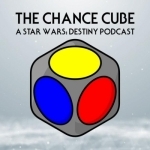
The Chance Cube - A Star Wars: Destiny Podcast
Podcast
A show by the fans, for the fans, about the fans of Star Wars: Destiny, a unique, collectible game...
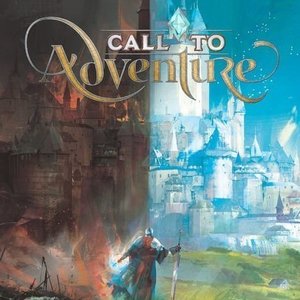
Call to Adventure
Tabletop Game
Create your ultimate fantasy hero and tell their story by facing challenges and crafting your...

